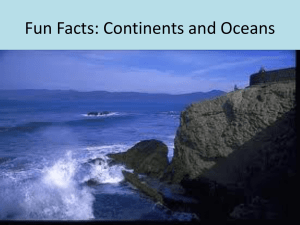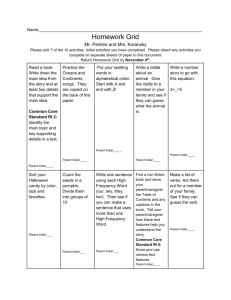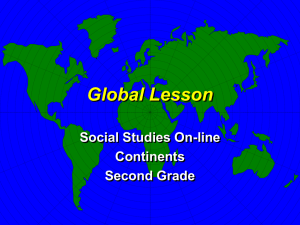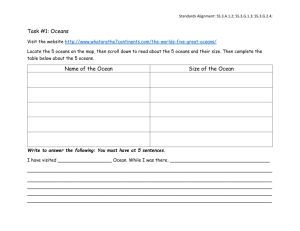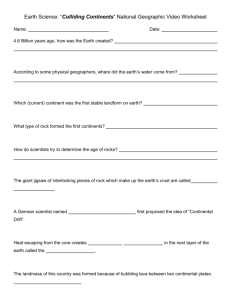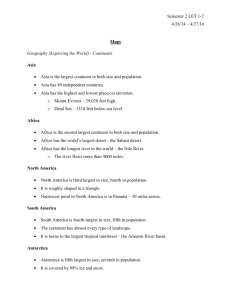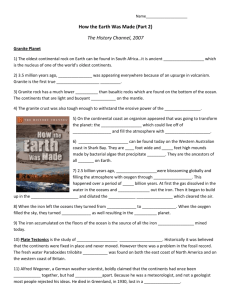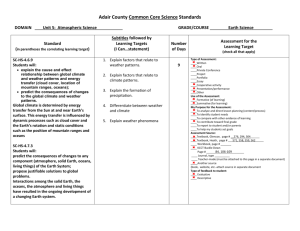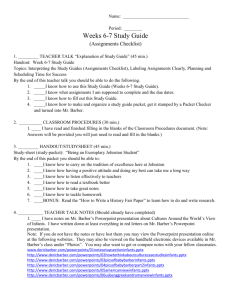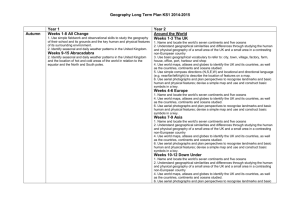Click here to see my Lesson Plan B
advertisement
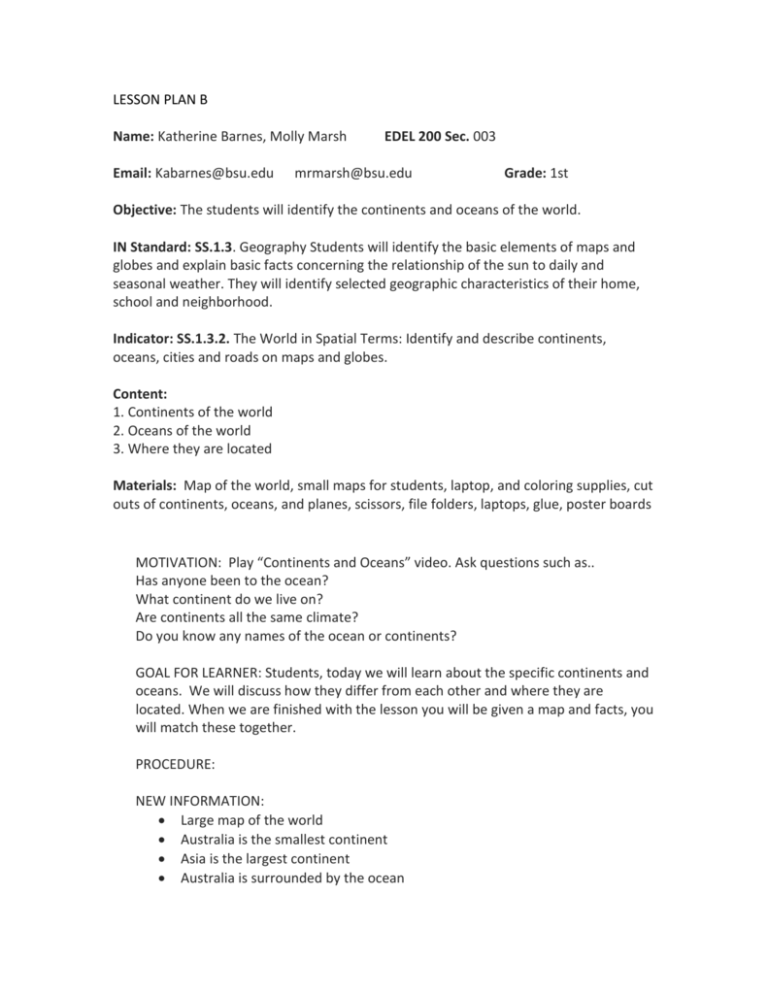
LESSON PLAN B Name: Katherine Barnes, Molly Marsh Email: Kabarnes@bsu.edu EDEL 200 Sec. 003 mrmarsh@bsu.edu Grade: 1st Objective: The students will identify the continents and oceans of the world. IN Standard: SS.1.3. Geography Students will identify the basic elements of maps and globes and explain basic facts concerning the relationship of the sun to daily and seasonal weather. They will identify selected geographic characteristics of their home, school and neighborhood. Indicator: SS.1.3.2. The World in Spatial Terms: Identify and describe continents, oceans, cities and roads on maps and globes. Content: 1. Continents of the world 2. Oceans of the world 3. Where they are located Materials: Map of the world, small maps for students, laptop, and coloring supplies, cut outs of continents, oceans, and planes, scissors, file folders, laptops, glue, poster boards MOTIVATION: Play “Continents and Oceans” video. Ask questions such as.. Has anyone been to the ocean? What continent do we live on? Are continents all the same climate? Do you know any names of the ocean or continents? GOAL FOR LEARNER: Students, today we will learn about the specific continents and oceans. We will discuss how they differ from each other and where they are located. When we are finished with the lesson you will be given a map and facts, you will match these together. PROCEDURE: NEW INFORMATION: Large map of the world Australia is the smallest continent Asia is the largest continent Australia is surrounded by the ocean North America, south America, Asia, Australia, Europe, Africa, and Antarctica are continents A continent is one of several major land masses on the earth. Oceans cover about 70% of the Earth's surface. Pacific, Atlantic, Indian, Arctic, and Southern oceans. CHECK FOR UNDERSTANDING: How many continents are there? How many oceans are there? Has anyone ever been to another continent? Is Indiana a continent? MODELING: I will show the students a map of the world. I will demonstrate how to place the plane on Asia and the boat in the Pacific Ocean. GUIDED PRACTICE: I will have the each student come up and place the plane or boat on whichever continent or ocean I ask him or her. New Information: There are four seasons: winter, spring, summer, and fall. Changes in weather occur from day to day and over seasons, affecting Earth, people, animals, and plants. Each season has different characteristics that make it different, helping us identify each season. Check for understanding: What was the weather like yesterday? How did you know what to wear today? What time of year does it usually snow? What time of year do we have falling leaves? Modeling: I will take my file folder and cut out a square in the middle of it to serve as a frame for a picture. Then once we go on a nature walk, I will show them a pre-drawn piece of scenery that is in relation to the current season. Guided Practice: I will have the students cut frames out of file folders and then when we go on a nature walk I will have them draw a picture of scenery of the current season and then have them draw what the same picture might look like in different seasons. New Information: Communities can have many varying components. Within a community, there are many different roles that each person plays. Every one’s community can be different. A community can be varied based on different geographical aspects. Check for understanding: What is a community? What can be different about every community? What are some main components of the community? What geographical differences can happen between communities? Modeling: I will show them a picture of what I interpret the surrounding community with certain geographical points emphasized. Guided Practice: I will separate the students into smaller groups and give them a large piece of paper. They will have to work as team to draw what they believe the community to look like. They will then share their work with the rest of the class and we can see the similarities and differences between the different groups. Practice: The students will be given cutouts of a world map with different spots missing. They will then have to place the correct object in its corresponding area. Assessment: The students will be given a series of requirements to put on their own personalized map that they will be creating. It will have to have such things as, different seasons present, different oceans and bodies of water, different community roles, and many other components to ensure they retained the given information of the lesson. They will personalize to however they see fit and how they see the world as themselves. Extension: There is a website called NASA Space Place and within the website it has a game called Wild Weather adventure. There can be teams of 1-4 players and there are various questions within this game pertaining to the information given in the lesson. Closure: You guys did an excellent job today! We learned about all different elements of the world that affect our everyday lives. Within the world, there are many different pieces of land, bodies of water, and many other things. We learned about the weather and how it affects the seasons. We also learned about how communities are important to our lives and how all these different aspects impact us on a daily basis. Thank you all for your participation today! Evaluation Criteria 5 points 3 points 1 point Followed map Used all necessary points on map Used a majority of all points on map Used little to no points on map Accuracy of Placement Placed everything in correct space Misplaced 1-4 items Misplaced 5 or more items Included all requirements Included everything required Missed 1-4 requirements Missed 5 or more requirements Points /15 points

